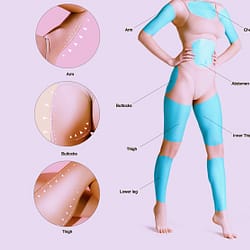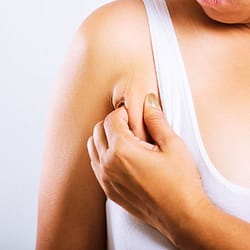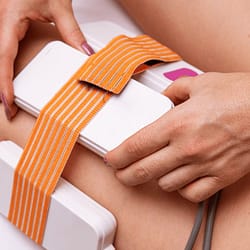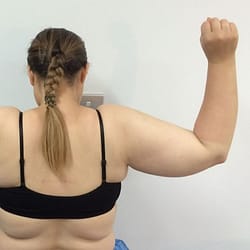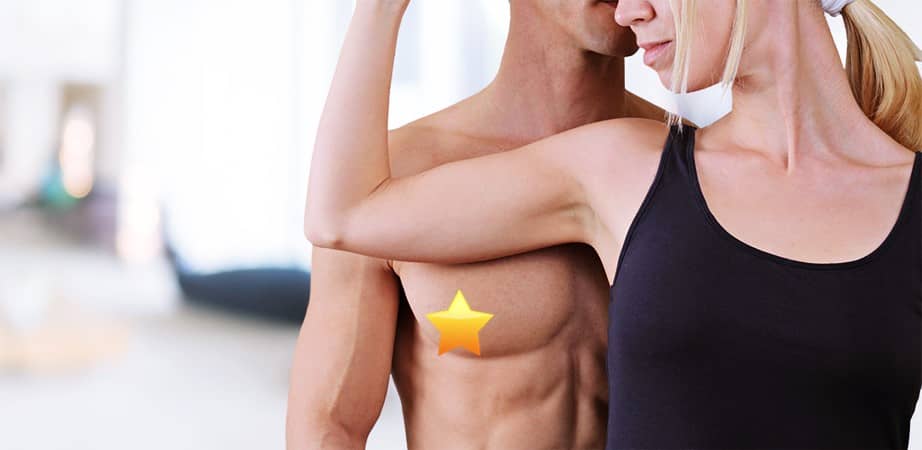
Many people looking for a way to get rid of excess fat from their upper arms often turn to upper arm liposuction. Before you decide if this procedure is right for you, it’s important to understand what exactly upper arm liposuction is, the potential risks and side effects, and if it can actually help you achieve the results you’re after. In this blog article, we will discuss what upper arm liposuction entails, who makes an ideal candidate, and how it works. We’ll also look into the advantages and disadvantages of the procedure so that you can make an informed decision about whether or not it’s right for you.
Table of Contents
What is upper arm liposuction?
Upper arm liposuction is a surgical procedure that removes fat from the upper arms. The upper arms are a common area for accumulation of excess fat, especially in women. This can be due to genetics, weight gain, or aging. Liposuction of the upper arms can result in a more youthful appearance and improved self-esteem.
The surgery is performed under local anesthesia with sedation or general anesthesia, depending on the extent of the procedure. A small incision is made in the natural crease of the elbow and a cannula (a small tube) is inserted to suction out the fat. The surgeon will make several passes through the area to ensure all the unwanted fat has been removed.
Afterwards, patients will need to wear a compression garment on their upper arms for 1-2 weeks to help with swelling and bruising. Most people see results within 2-4 weeks following their surgery and final results are usually seen around 3-6 months post-op.
If you are considering upper arm liposuction, be sure to consult with a board certified plastic surgeon who has experience performing this type of procedure.

How is the procedure performed?
The procedure is usually performed under local anesthesia with sedation, meaning that you will be awake but relaxed. It takes about one to two hours.
First, the area to be treated will be marked. Then, a small incision will be made in the skin and a cannula (a thin tube) will be inserted. The cannula will then be used to break up the fat cells and suction them out of the body.
You may experience some bruising and swelling after the procedure, but this should subside within a few weeks.
What are the risks and side effects associated with upper arm liposuction?
Most people experience only minor side effects after upper arm liposuction. These can include bruising, swelling, and soreness around the incision site. However, more serious risks are also possible. These can include infection, damage to the nerves or blood vessels, and uneven results.
It’s important to consult with a board-certified plastic surgeon to discuss the risks and side effects associated with upper arm liposuction before undergoing the procedure. This will help ensure that you understand all of the potential risks and side effects and can make an informed decision about whether or not the procedure is right for you.
How much does upper arm liposuction cost?
The cost of upper arm liposuction varies depending on the individual’s needs. Generally, the procedure ranges from $2,100 to $4,500. The price may be higher or lower depending on the surgeon’s experience and the geographical location.
Is upper arm liposuction right for me?
If you have excess fat on your upper arms that diet and exercise haven’t been able to eliminate, you may be considering upper arm liposuction.
Upper arm liposuction is a cosmetic procedure that can remove unwanted fat from the upper arms and improve their shape and appearance. The procedure is typically done using a small, hollow tube (cannula) that is inserted through tiny incisions in the skin. The cannula is then used to suction out the excess fat.
Upper arm liposuction can be an effective way to improve the look of your arms and boost your self-confidence. However, it’s important to note that the procedure is not a weight-loss solution and should not be used as such. It’s also not an alternative to exercise or a healthy diet.
Before you decide to undergo upper arm liposuction, it’s important to consult with a board-certified plastic surgeon who can evaluate your individual case and determine if the procedure is right for you.

